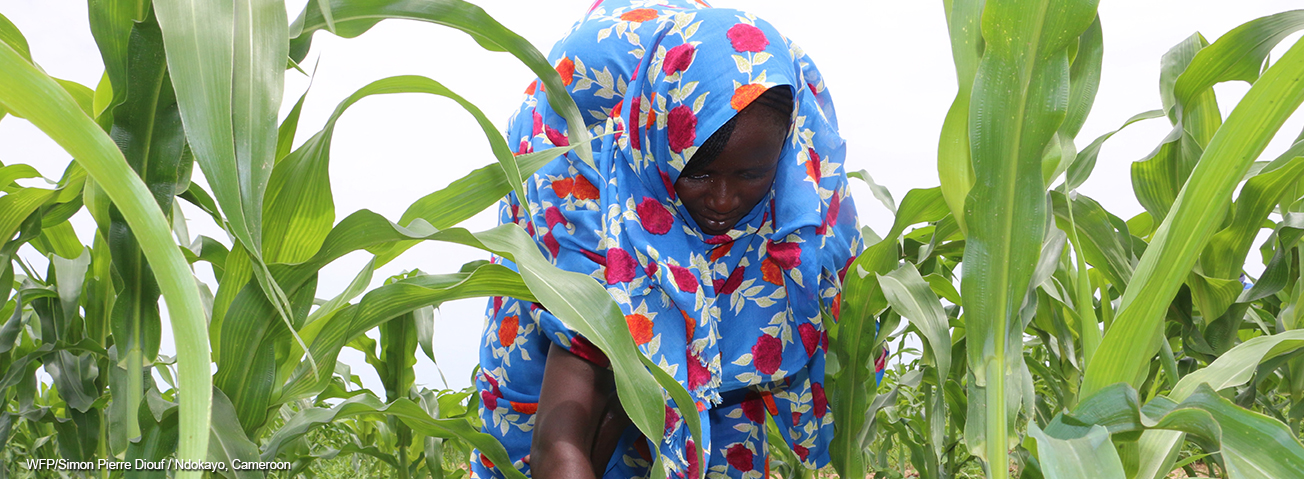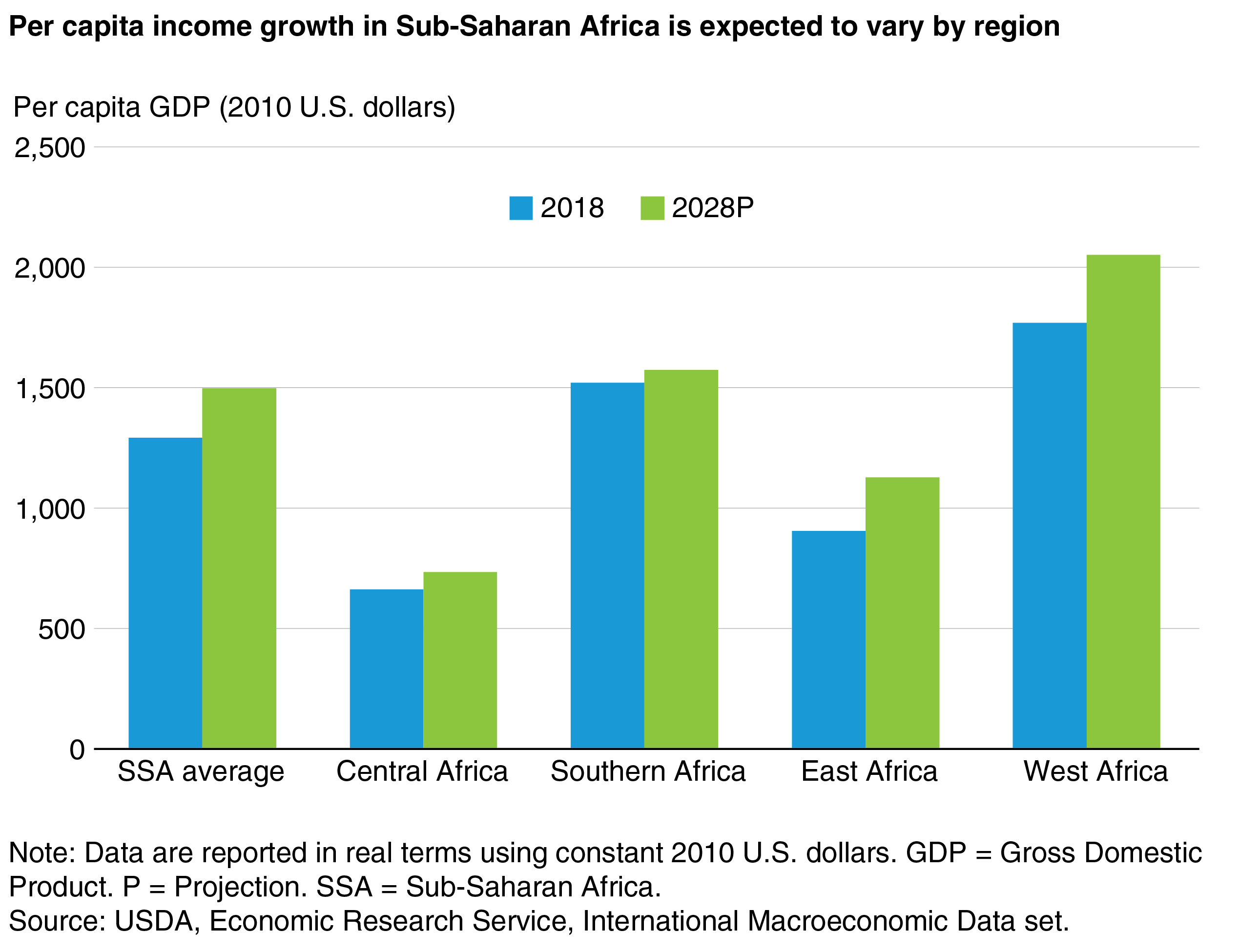
Sub-Saharan Africa’s Food Security Situation Varies by Region
- by Birgit Meade and Karen Thome
- 9/4/2018
Based on ERS’s annual 10-year projections for key food security indicators for 76 low- and middle-income countries, Sub-Saharan Africa (SSA) continues to be the most food-insecure region among all those studied, though levels of food security vary within the region. The 39 Sub-Saharan African countries can be divided among four subregions: Central Africa (4 countries), East Africa (10 countries), Southern Africa (9 countries), and Western Africa (16 countries). These subregions differ in social and economic structure, and average income levels, which helps account for the differences in food security.
Some areas of Sub-Saharan Africa are expected to show progress in improving food security over the next 10 years, with 45-percent reductions in the share of food-insecure people in both East and West Africa and a 30-percent reduction in the absolute number of food-insecure people. Within Sub-Saharan Africa, West Africa has the largest population and Gross Domestic Product and the highest per-capita income. By 2028, the share of food-insecure people in West Africa is expected to drop below 10 percent. While incomes in East Africa are lower than those in West Africa, sustained growth in East Africa’s largest economies will help reduce the share of food-insecure people there from 43 percent in 2018 to 24 percent in 2028.
In 2018, Southern Africa has similar levels of food insecurity as East Africa, but its agricultural sector has faced adverse weather conditions and pest outbreaks in recent years, which is expected to slow the rate of improvement in food insecurity. More people are projected to be food insecure in Southern Africa in 10 years than today, though the share of the population that is food insecure is projected to fall from 44 percent to 36 percent. The subregion’s dependence on mining and periods of low commodity prices have made it difficult to sustain economic growth and progress in improving food security, especially because population growth is high.
Central Africa is the poorest subregion in SSA and is projected to remain so. Slow economic growth and macroeconomic instability are expected to increase the number of food-insecure people in this area to 89 million by 2028, up 11 percent. Despite this unfavorable projection, other measures, such as the intensity of food insecurity, or the extent to which consumption falls below the nutritional target, are expected to improve. Due to population growth, the share of the population that is food insecure is also expected to drop from 67 percent to 59 percent. Central Africa has suffered conflict and civil unrest, which has led to large numbers of internally displaced persons and disrupted livelihoods and agricultural production, all of which negatively affect food security for millions of people.
This article is drawn from:
- Thome, K., Meade, B., Daugherty, K. & Christensen, C. (2018). International Food Security Assessment, 2018-28. U.S. Department of Agriculture, Economic Research Service. GFA-29.


